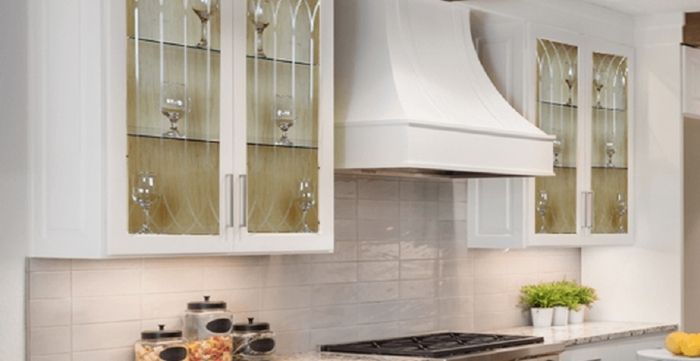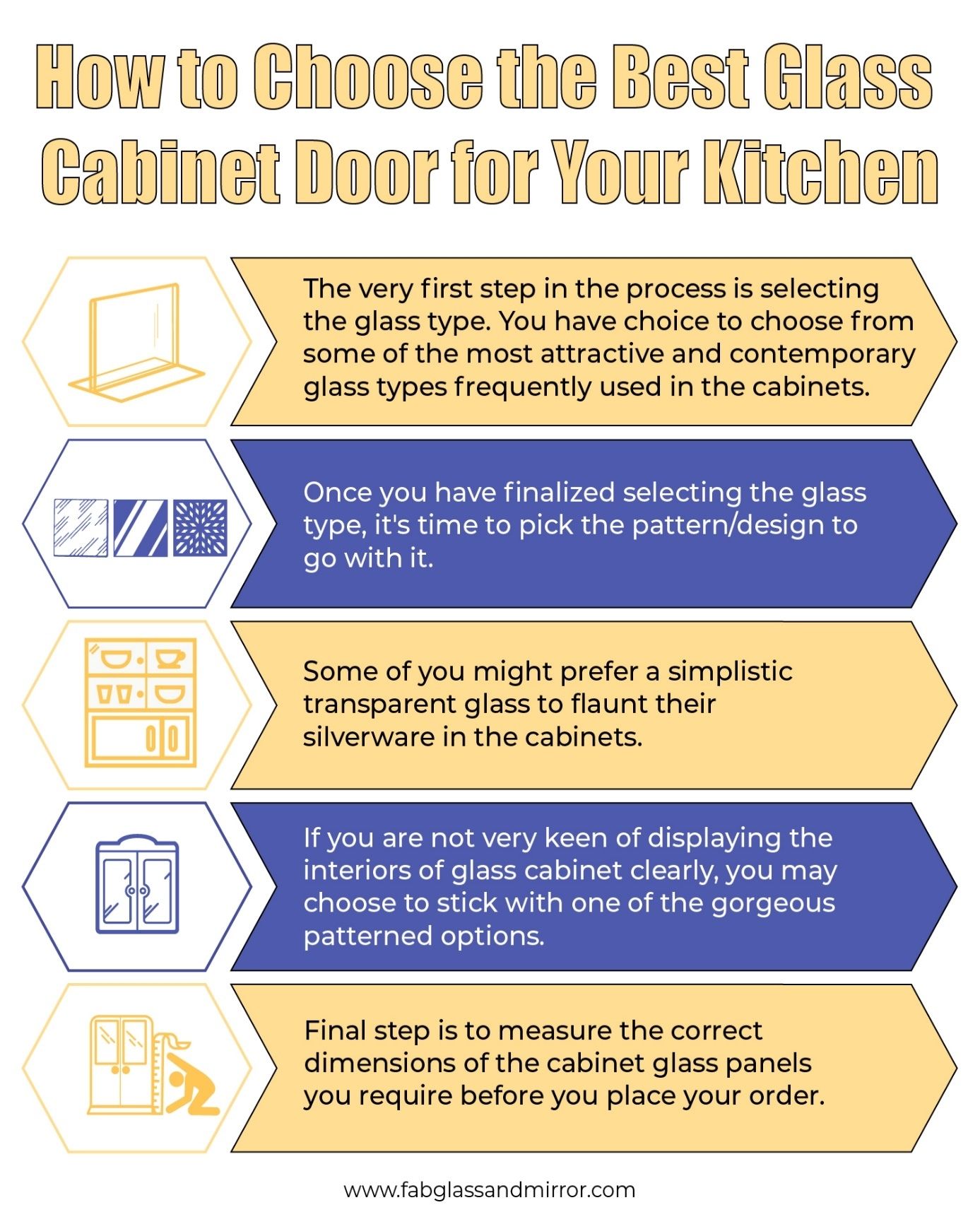Glass kitchen cabinet doors are much more flexible and pliant than you might have ever thought of; there’s also a practical facet to them.
Install a glass for door cabinet, if you’re going for sturdy panelling cupboards or open shelving. Besides, the arrangement enables you to organize everything perfectly in a module, without a need to hide everything. The glass cabinetry permits the light to penetrate your kitchen space, illuminating your ceramics and porcelain too.
With so many benefits on offer, having glass doors for your kitchen closets is not only the easiest means to improve aesthetics, but they serve functional requirements pretty well too. However, choosing a perfect glass for your cabinets can appear a bit challenging task to undertake— especially with an array of glass options available to take a pick from.
Fret not, though! We’ll take you through the complete process that we followed while ordering a beautiful set of glass cabinet doors from Fab Glass and Mirror.
So, without losing any more time, let’s get started.
Step 1: Choose a Glass Type
The very first step in the process is selecting the glass type. Here are some of the most attractive and contemporary glass types frequently used in the panelling of kitchen cabinetry.
Textured Glass: Used to show versatile patterns and designs of cabinets
The textured glass comes in a wide variety of patterns such as Clear, Aquatex, Arctic, etc. to name a few. This particular type of glass tends to distort somewhat the interior of the cabinet using imprinted patterns without completely obscuring the view.
Based on the design you choose for your cabinetry, the glass might appear more or less translucent in appearance.
Leaded Glass: Used for panelling kitchen cabinetry
It’s a glass type where the lead content either completely replaces or exceeds the calcium content of conventional potash glass; the material is quite rare too.
Also referred to as crystalline glass at some places, leaded glass is one of the premium varieties of glass used for panelling kitchen cabinetry.
Sumiglass: Used where low-maintenance is required
Sumiglass is a laminated glass type frequently used in the panelling of glass cabinet doors, besides skylights, space bars, and office barriers. Some of the popular designs of Sumiglass include Heavy rice paper, Thai mango rice paper, etc.
V-Grooving Glass: Used to obscure items inside cabinets with elegant design
As the name might suggest, V-grooving involves v-shaped patterns, as well as customized engravings of varying types cut into the glass. This variety of glass is preferred to build designer doors for kitchen closets.
We personally went ahead with safety-certified Sumiglass because of its sturdy laminated built and striking designs available in a variety of tinted options.
Step 2: Select a Design From Versatile Design Options
Once you have finalized selecting the glass type, it’s time to pick the pattern/design to go with it. Some of you might prefer a simplistic transparent glass. However, those of you who are not very keen on displaying the interiors of their glass cabinet too clearly may choose to stick with one of the gorgeous patterned options.
For instance, at Fab Glass and Mirror, after you select leaded glass, you’ll be presented with the following glass designs options to choose from:
- Colonial glass
- Prairie glass
- Tudor glass
- Queen Anne glass
- Queen Anne II glass
- Heritage glass
- Traditional glass
- Traditional II glass
- Square Border glass
- Square Border II glass
You may select the pattern of your preference before proceeding further to the next step. Likewise, you may follow the same process with Sumiglass, V-grooving glass, or textured glass too.
Step 3: Select Option
Post finalization of glass type and pattern, next you need to lock-in the correct dimensions of the cabinet glass panelling you require, post which you are forwarded to ‘select options’ page. The choices here differ from glass to glass. Let’s check them out one by one.
Textured Glass Thickness and Options: In the ‘select options’ page of textured glass, you’ll find thickness and strength options.
While thickness is pre-selected at 5/32″, in strength, you can choose between Annealed glass and Tempered glass.
Annealed glass: It is your regular glass, which can shatter into jagged and dangerous shards on being broken.
Tempered glass: It is created by permanently bonding two panes of glass using a specialized proprietary laminating process. The tempered glass version is 4 times sturdier than your regular option.
V-Grooving Glass Thickness and Options: In the ‘select options’ page of V-grooving glass, you’ll find thickness and strength.
While thickness is pre-selected at 1/4″, in strength, you can choose between Annealed glass and Tempered glass.
Sumiglass Thickness and Options: Since Sumiglass is already a tempered glass that comes with pre-selected 1/4″ thickness, you’ll not see the ‘select strength’ option. Press ‘Continue.’
Leaded Glass Thickness and Options: It is made with the combination of Glass A: 1/8″ Clear Annealed and Glass B: 1/8″ Seeded Glass, bonded by a solder joint on both sides. In the ‘select options’ page, you may pick appropriate finishing. Available options are:
- Zinc
- Glass
- Copper
- Patina
The price on the right will be revised as per the finishing selected by you.
Finally, you may check the order summary and click ‘Buy Now‘ to place your order.


Leave a Reply